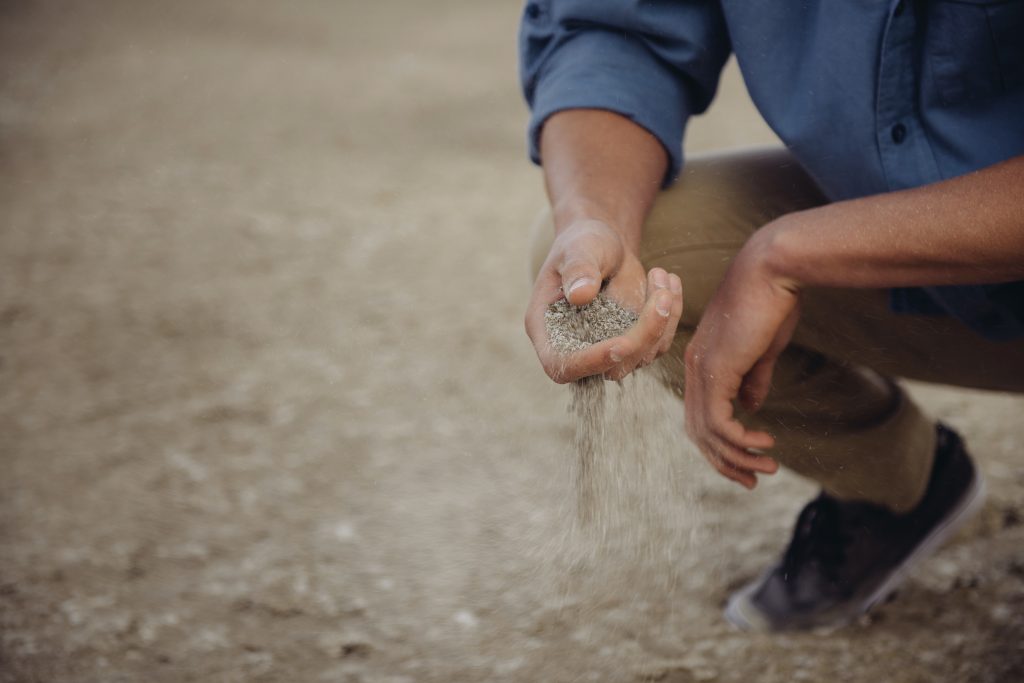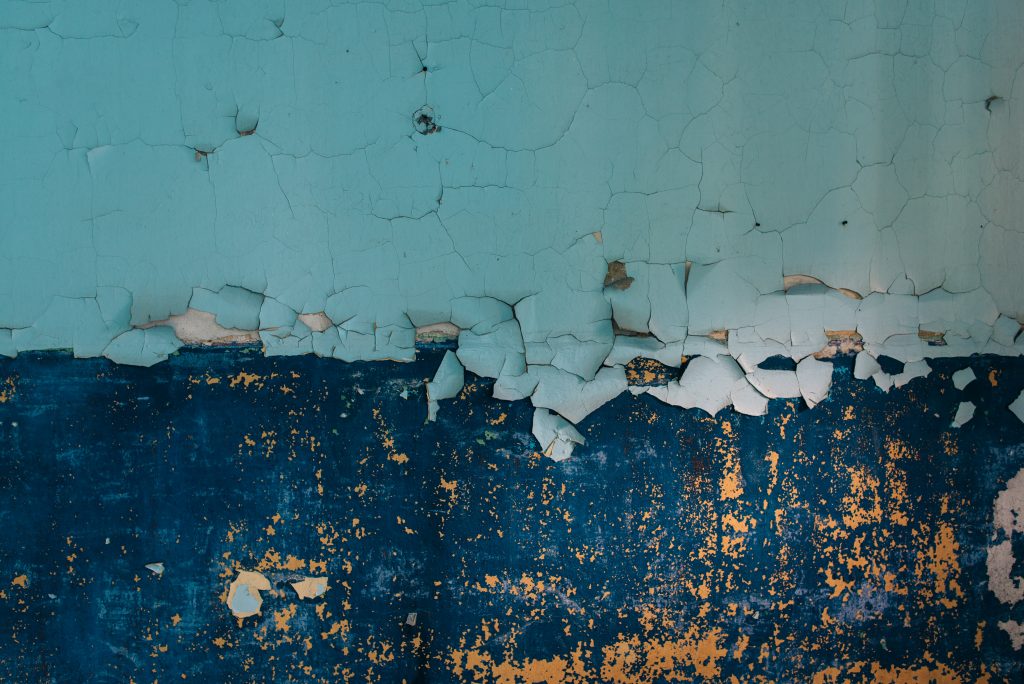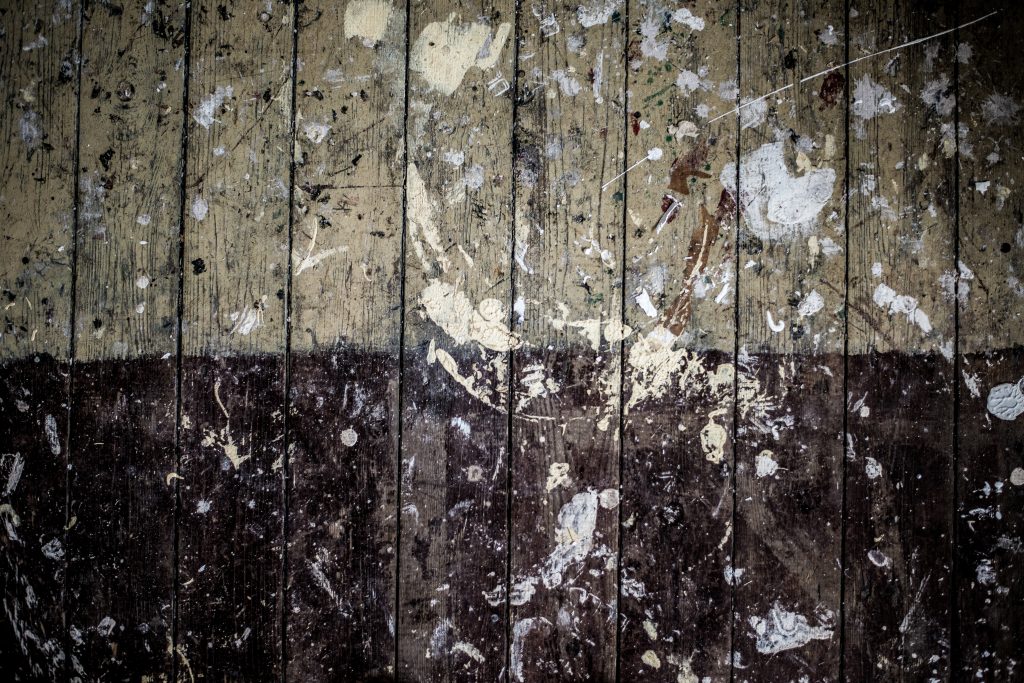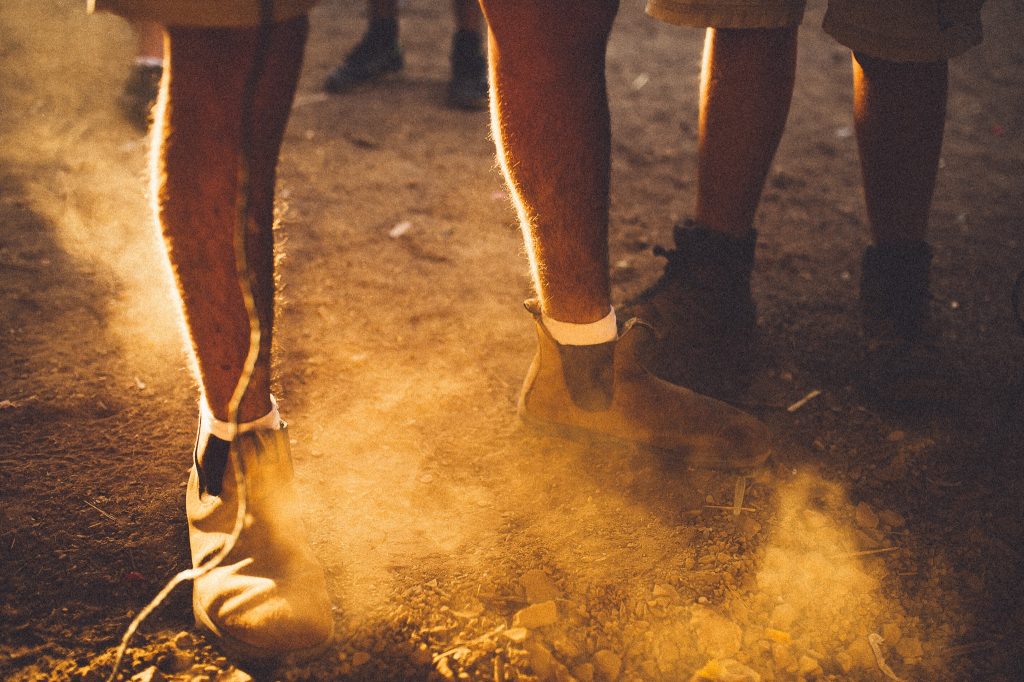Dirt is one of the most vexing and challenging problems encountered in the paint shop. It never seems to end and is often hard to eliminate. Dirt can come from many sources including some that are not even under the direct control of paint line personnel.

What is dirt anyway?
Dirt is any visible, objectionable object in or under the paint film. Most people can detect a particle as small as 5 microns (0.2 mils) in the paint. Dirt in the paint is more easily detected in glossy films than in flat (low-gloss) ones.
What sorts of problems does dirt cause?
Generally only appearance problems arise. Customers just don’t like to see particles of foreign material in the paint film.
Where does dirt come from?
It can come from many sources. Here is a partial list:
- Filters
- Paint
- Sanding
- Sealers
- Shot blasting
- Sealing
- Compressed air
- Blow-off air
- Dry-off ovens
- Conveyors
- Clothes
- Gloves
- Hair
- Masking tape
- Plant air
- Paint pots
- Gun tips
What are some of the objectionable components of dirt?
Here is a partial list:
- Dried paint
- Bake ovens Wipe rags
- Hooks and hangers
- Cotton fibers Dried sealants
- Sanding dust
- Weld spatter
- Filter media
- Dried chemicals
- Soot
- Grinding
- Booth air
Probably the most common dirt material is natural or synthetic fiber. Cotton gloves and clothing are very common sources of dirt.
How does dirt actually get on a surface?
Often by falling out of the air or from a surface such as the conveyor. Sometimes dirt is mechanically placed on a surface by wiping with a rag or handling. Plastics sometimes attack dirt from the air electrically.
How can plastics attract dirt electrically? Aren’t plastics non-conductive?
They are, and that is the problem. Since plastics cannot conduct a charge to ground, they simply sit in the air charged and induce the opposite charge in nearby air borne dust. The resulting opposite charge attraction pulls the dust to the plastic surface.
But how does the plastic surface become charged in the first place?
Plastic surfaces may become charged by friction. The phenomena is called turbocharging or static electricity. It is what happens when you walk across a nylon carpet on a dry day. Your shoes rub electricity from the carpet, and your body becomes charged. It can be a shocking experience when you reach for a doorknob. You can see more about this in this video.
Well our plastic parts do attract dirt from the air but no one rubs them. How do they become charged?
Some plastics charge easily with very little frictional rubbing. Dry-off air blowing over the surface may cause some static electricity, especially on dry days when there is too little moisture in the air to allow the charge to leak off onto the moisture. Actual rubbing is a more likely cause of the static electricity in most cases.
What can we do to reduce the charge on the plastic surface?
One way is to keep the humidity up. More moisture in the air means the electrical charge can more easily leak off into the air. That is pretty much the same as saying the surface won’t become charged in the first place.
Another approach is to blow ionized (electrified) air over the surface. The charged particles (ions) in the air neutralize the surface charges on the plastic and the problem is solved, or at least greatly reduced.
How do I get ionized air?
You produce it as needed by allowing an electric arc (spark) to ionize air and then blowing the charged air over the surface.
How can I tell what kind of dirt is in the paint?
Well, it may not be easy. Generally you have to examine the dirt particle under some sort of magnification. Magnifying dirt particles up to about 30X is easy and inexpensive. Magnifying glasses of 30X are readily available. Higher power equipment ‘ (including stereoscopic zoom microscopes) are available.
Fibers are most easily identified by examination with a polarizing microscope. This equipment can usually distinguish between various types of fibers such as cotton, wool, nylon, polyester, etc. Some companies take photos of magnified dirt and maintain a dirt library to help in identifying dirt when it reoccurs.

Here comes the big question: How can I get rid of or at least reduce dirt?
Either don’t generate the dirt or collect it before it reaches the part. Generating less dirt is obviously the best way to go, but it may not be possible or economically feasible. So, I bet you would like some more specific suggestions.
You bet I would. What specific steps can I take to reduce or eliminate dirt?
Let’s group them under the 7 general headings of filters, booths, conveyors, ovens, guns, people and miscellaneous.
1. FILTERS
What suggestions can you make about filters?
Here are 3:
- Use the proper size filters.
- Maintain filters regularly.
- Use a disposable filter on guns and blow-off nozzles.
What size filters should I use?
It is hard to generalize. Between 80 and 100 mesh are often used for paint. Booth air filters are often a trial-and-error thing. Whatever works best. Remember, a more expensive filter may last longer and be more economical in the long run. Pretreatment tanks often respond well to the use of bag filters to remove sludge. Two to four filter screens are sometimes helpful with sprayed solutions. A good approach is to ask your suppliers.
How often should filters be changed or serviced?
A little sooner than you normally notice a falloff in performance. For example, if a filter starts to fail after about 10 days, you might want to change it every week.
What is the scoop on disposable filters?
They are small, lightweight filters made to be discarded after a certain amount of use. Many shops use them on their spray guns as shown in the nearby figure.

2. BOOTHS
What can be done about booths to reduce dirt?
Several things:
- Use positive-pressure booths (or negative-pressure booths in positive-pressure rooms).
- Make sure the booth is balanced.
- Keep wipe rags out of booths Use strippable coatings on booth walls.
- Consider water wash-down walls
What are positive pressure booths?
Booths have a positive pressure if more air is supplied to them than is exhausted. The extra air spills out the ends of the booth, under doors and through cracks or holes, etc. This outward-moving air keeps plant air out of the booth. Since plant air is usually dirty air, a positive-pressure booth reduces dirt problems.
What does “booth balance” mean?
It means that air is not moving sideways in the booth. Sideways-moving air can carry dry spray from one part to another.
What about strippable coatings?
These are fairly thick, sticky coatings sprayed on booth walls to catch airborne dust and dirt. It can last for days or weeks before it must be peeled off (usually by hand) and replaced.
Are water wash-down walls really booth walls with water running over them?
Yep. I have seen it. The plant that had installed this system liked the results.
3. CONVEYORS
How can conveyors be made less dirty?
Here are some suggestions:
- Keep conveyors clean.
- Use sanitary pans.
- Consider floor conveyors.
How can I keep the conveyor clean?
Blow or brush it off just before the parts are loaded. Automatic conveyor cleaning equipment if available from companies that make conveyor-lubricating devices.
What is a sanitary pan?
A sanitary pan is a metal pan located under the conveyor but over the parts. It catches oil or dirt that drips or drops from the conveyor. They work well but require that the hangers be modified to fit around the pan.
What are floor conveyors and why are they recommended?
They are conveyors mounted on or in the floor, rather than overhead. They solve the problem of dirt falling from the conveyor onto the parts. The parts are generally supported from underneath. They are more costly to install than overhead conveyors, but they do help a lot with dirt problems.

4. OVENS
What is the story with ovens and dirt?
Ovens are great dirt generators. It comes from incomplete burning of fuel, rusted walls and ceilings, dried overspray and conveyor lubes, and miscellaneous dirt jiggled loose from hooks, hangers and trolleys. Here are some suggestions:
- Vacuum ovens regularly (at least weekly).
- Wash oven walls weekly.
- Consider using strippable tacky coatings on oven walls.
Vacuum the oven! You mean go in there with a vacuum cleaner?
Sure. Third shift is the best time, or whenever the oven is cool. Do it weekly. While you’re there look for debris on the floor, misaligned louvers and any parts that have fallen from the hangers.
What about washing the walls?
What about it. Some shops do it. They use a hose and vacuum up the water, or better yet, put a drain in the oven floor. It helps keep the dirt down.
Do strippable oven coatings work like strippable booth coatings?
Yes, except they do not dry out as fast. They really are high-temperature greases, so that they stay tacky in the hot oven. Clean them off every few months or whenever they dry out.
5. GUNS
What dirt comes from guns?
Mostly dried paint that collects on the face of the gun and eventually breaks off. It is a problem for both liquid and powder coatings.
What is usually done to reduce gun dirt?
Keep the guns clean. Powder guns sometimes use a gentle air stream to keep the face of the gun clean. Liquid paint spray guns need to be wiped off occasionally with a solvent rag.

6. PEOPLE
What about people?
People are a major source of dirt. Lint and fibers from clothing are the main culprits. Hair and dandruff can sometimes lead to dirt. The following suggestions have all been found to be helpful:
- Wear non-woven coveralls, hairnets, gloves and booties.
- Install an air shower.
- Use sticky mats.
What are non-woven clothes?
They are made from solid films of material. There is no weaving. Thus no fibers can break loose to settle in the wet paint. Non-woven items such as booties (worn over shoes), coveralls and gloves are used in many paint shops to reduce dirt problems. Everyone entering the paint shop (plant manager, too) must put them on. They may not be stylish, but they are effective.
What is an air shower and how does it work?
An air shower is a small room (phone booth sized or a little larger) through which everyone entering the paint shop must pass. It works like an air lock. While you are inside, jets of high-velocity air blow dirt, dust and lint from your clothing and exhaust it out of the paint shop. The air moves at several thousand feet per minute and can dislodge quite a bit of dirt from clothing. Air showers can be equipped to ionize air and help neutralize static charges.
How much do air showers cost?
You can buy a decent one-person air shower for 12,000-$15,000.
What are sticky mats?
They are pads of sticky paper that are stepped on when you enter the paint shop. The sticky surface removes dirt from shoe soles quite effectively.
7. MISCELLANEOUS
What other ideas might be helpful?
Here are a few more suggestions:
- Hang greased panels on empty hooks to trap airborne dirt.
- Use water pans on the floor.
- Keep cardboard out of the paint shop.
What are these greased panels?
Just greased metal panels (use oven wall grease) that are placed on empty hooks to trap any airborne dirt that hits them. Some shops have found them to be worthwhile.
What’s the story on water pans?
They are just shallow pans of water placed on the floor wherever people and forklift trucks do not need to go. Airborne dirt that falls into them is retained. They need to be emptied and cleaned before they evaporate to total dryness.
What’s the deal with avoiding cardboard?
Cardboard is a great source of fine dust. The dust tends to be released whenever the cardboard is handled. Some shops have replaced cardboard shipping boxes with plastic containers that can be recycled.
Gosh If I implement most of these suggestions, won’t it take a lot of man- hours?
Sure. But probably less than the time spent now in repairing parts. Repair operations are always undesirable. They cost money and jeopardize quality. Remember: It’s always better to do it right than do it over!
Are you trying to solve a dirt challenge in your facility? Contact your Accessa Coatings Consultant or call 800-593-0126.
